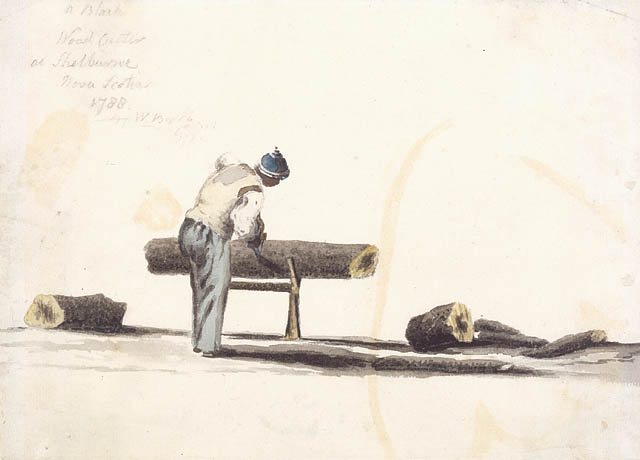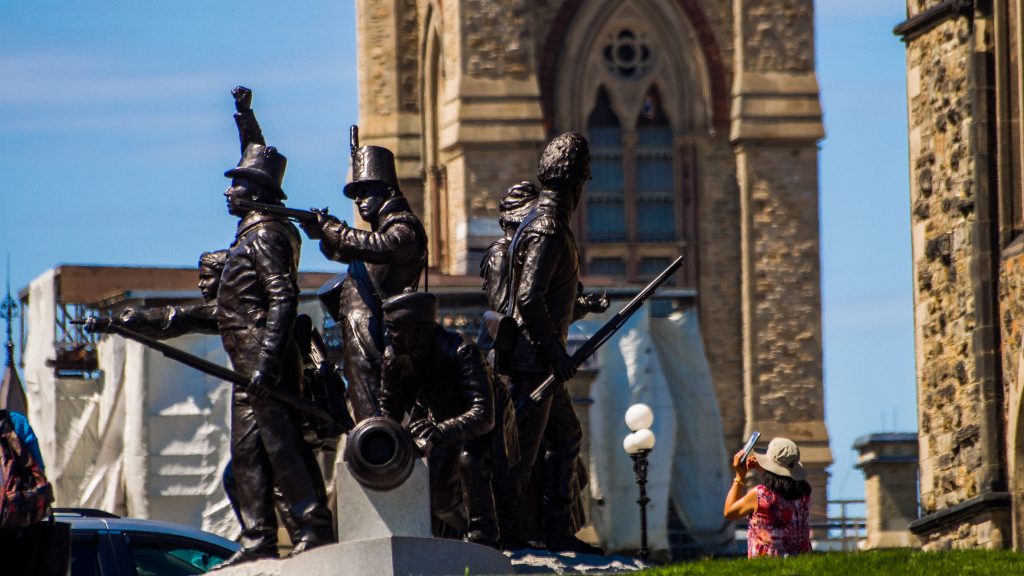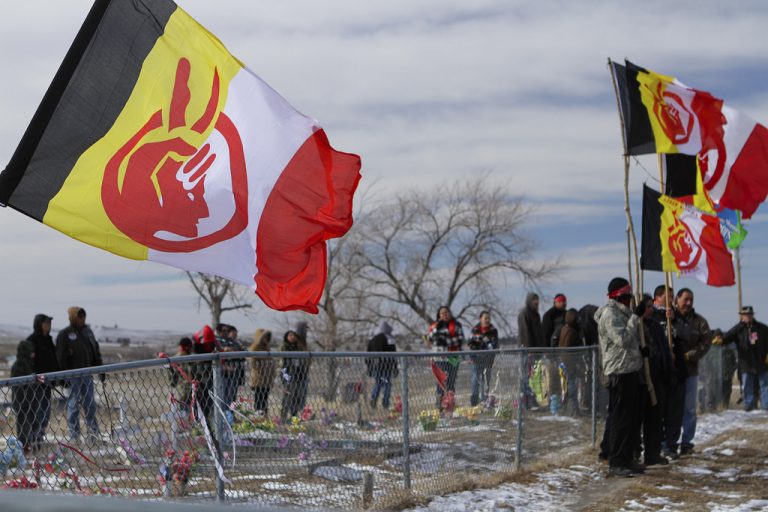As the Border Studies Scholarship section demonstrates, some scholars see the border as a site of struggle. We can further analyze this struggle in literary border texts that represent key historical events from diverging perspectives. Many events have impacted members of different groups in different ways (for example, government responses to the attacks in the US on September 11, 2001 significantly curtailed Muslim Canadians’ and Muslim Americans’, as well as other racialized individuals’, freedom of movement across the border). This section examines texts that depict three events: the American War of Independence (1778-1783), the War of 1812, and the American Indian Movement (AIM), founded in 1968. The military contexts of the American War of Independence and the War of 1812 highlight the border’s function in protecting nation-state interests (and, in the context of these two wars, imperial interests). The example of AIM shows how strategically disregarding the border can be crucial to seeking justice for groups with shared grievances across the border. This section conducts a comparative analysis of paired border texts for each event: this comparative research method enables scholars to see different perspectives on the same event, drawing our attention to how representations of history are written from particular positions.
American War of Independence

“A Black Canadian Woodcutter at Shelburne, Nova Scotia.” Watercolour sketch by William Booth, 1778. Library and Archives Canada, Acc. No 1970-188-1090 W.H. Coverdale Collection of Canadiana.
The War of Independence divided the US from British North America, prompting Loyalists’ (those loyal to the British crown) migration to what is now Canada. In Jane Urquhart’s novel Sanctuary Line (2010), the Irish North American Butler family splits. One brother, Amos, remaining loyal to the British, moves to Upper Canada, “only a two-day journey by horse and wagon and a short boat ride across Lake Erie,” while another brother, Samuel, stays “true to the New Republic of the United States of America” (63).
Whereas Sanctuary Line’s twenty-first-century narrator and protagonist, Liz Butler, is descended from white Loyalists, Lawrence Hill’s The Book of Negroes (2007) dramatizes Black Loyalist history through Aminata’s crossing from New York to Nova Scotia. Keen to abandon “a nation that said all men were created equal, but that kept [her] people in chains” (311), Aminata discovers slavery and indentured servitude operating in Nova Scotia, contradicting the colony’s status as “Promised Land.” A comparison of Sanctuary Line’s and The Book of Negroes’ representations of the War of Independence demonstrates the diverging experiences of white and Black Loyalists, with members of the white Butler family establishing a home north of the border far more easily than the Black Loyalists cheated by the British.
War of 1812
In the War of 1812, the US attempted to wrest Upper Canada from the British, with Indigenous nations, led by Tecumseh (Shawnee), contributing to Upper Canada’s defence. John Richardson’s novel The Canadian Brothers (1840) features this war fought across the Canadian colony’s “weakly defended frontier” (89). Richardson separates Canadian from American by casting Americans as the narrative’s chief villains, critiquing US failure to “stud[y] conciliation, rather than extension of territory” (86) with regards to Indigenous peoples, and depicting American military leaders evincing racist views of Indigenous and Black people. However, Richardson depicts Indigenous people positively only insofar as they support the British, and portrays the Canadian Grantham family’s Black servant, “faithful old Sambo” (138), through racist caricature, thereby privileging white Canadianness over what is depicted as Indigenous and Black subservience.

War of 1812 monument on Parliament Hill in Ottawa, Ontario. Christoph Ulański, CC BY-NC 2.0, via Flickr.
Contrasting Richardson’s vision of white Canadianness, Djanet Sears’ play The Adventures of a Black Girl in Search of God (2003) emphasizes the history of a Black Southern Ontario community founded through a land grant given to a Black soldier who fought in the War of 1812. The play embeds Blackness within a foundational Canadian narrative, a counterpoint to the racism confronting the settlers’ descendants, leading the community’s pastor to dismantle assumptions that “[w]hite supremacy is a phenomenon that only happens south of the border”: he states, “Well folks, we live in the south of the north” (82). Whereas Richardson depicts the decency of the white Canadian officer class during the War of 1812, Sears both writes Blackness into the defence of the nation during the war and exposes the virulent racism north of the border in the present day.
American Indian Movement
Indigenous activism also troubles Canada-US distinctions concerning race relations. Although Indigenous activism in North America long predates the American Indian Movement, founded in 1968 in Minneapolis, AIM features in literature produced north of the border. Key events in AIM history that took place south of the 49th parallel appear in Jeannette Armstrong’s (Okanagan) novel Slash (1985): the Trail of Broken Treaties (1972), a caravan across the US demanding rights for Indigenous peoples; its culminating occupation of the Bureau of Indian Affairs building in Washington, DC; and the siege of Wounded Knee on the Pine Ridge reservation in South Dakota (1973).
The Okanagan protagonist, Slash (Tommy Kelasket), is from north of the 49th parallel, but Okanagan territory straddles the border, and Slash participates in the above events. For Slash, Indigenous activism in Canada should follow AIM’s lead, and he advocates “implementing the Jay Treaty [1794], an international agreement allowing Indians unrestricted passage across the border” (125). Slash’s reference to the Jay Treaty emphasizes both Indigenous peoples’ resistance to the settler-colonial nation-states of Canada and the US and his cross-border solidarity with US-based Indigenous activism.
In contrast, in Thomas King’s Green Grass, Running Water (1993), the Alberta-based Blackfoot character Lionel Red Dog becomes unwittingly entangled in AIM activities south of the border. He pleads Canadian to avoid participation, indicating that “[b]orders make us stupid and allow us to remain so if we let them” (Fee and Flick 132). Unlike Slash, Lionel’s approach to the border strategically resembles that of Anglo-Canadian nationalists; significantly, Lionel’s character is often a target of ridicule and critique in King’s novel.
If the War of Independence and the War of 1812 apparently reinforce Canada-US distinctions, comparisons of border texts demonstrate the instability of such differences. Further, border texts representing Indigenous activism reveal shared struggles across the border between Indigenous peoples and settler-colonial nation-states, even if individual Indigenous characters such as Green Grass, Running Water’s Lionel try to avoid participating in resistance, a far cry from the mother’s assertion of Blackfoot citizenship in King’s “Borders.”

American Indian Movement flags flying at the Liberation Day Four Directions Walk to Wounded Knee in 2014. Confrontational Media, “Liberation Day – Wounded Knee,” 2014. CC BY NC-ND 2.0, via Flickr.
Reflection Questions
- How do border texts’ diverging perspectives on historical events affect your understanding of Canadian history?
- Karina Vernon observes that for Black settlers in Canada, “black spaces … feel like fraught, un-home-like places” (69). How do the events above reveal communities’ staking a claim to home? How is home portrayed in border texts?
- Recent North American border developments include calls to reinforce the Mexico-US border and refugees’ dangerous journeys across the Canada-US border. What comparisons can you draw between the events and texts above and these contemporary issues?
Works Cited
- Armstrong, Jeannette. Slash. Penticton: Theytus, 1985. Print.
- Fee, Margery, and Jane Flick. “Coyote Pedagogy: Knowing Where the Borders Are in Thomas King’s Green Grass, Running Water.” Canadian Literature 161/162 (1999): 131-39. Print.
- Hill, Lawrence. The Book of Negroes. Toronto: HarperCollins, 2007. Print.
- King, Thomas. Green Grass, Running Water. Toronto: HarperCollins, 1993. Print.
- Richardson, John. The Canadian Brothers. Ed. Donald Stephens. Ottawa: Carleton UP, 1992. Print.
- Sears, Djanet. The Adventures of a Black Girl in Search of God. Toronto: Playwrights Canada, 2003. Print.
- Urquhart, Jane. Sanctuary Line. Toronto: McClelland & Stewart, 2010. Print.
- Vernon, Karina. “Writing a Home for Prairie Blackness: Addena Sumter Freitag’s Stay Black and Die and Cheryl Foggo’s Pourin’ Down Rain.” Canadian Literature 182 (2004): 67-83. Print.








 ©
©